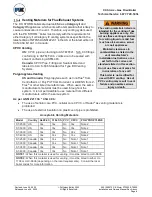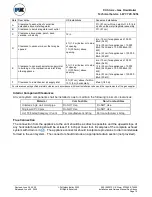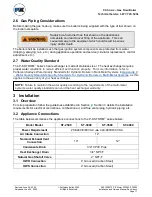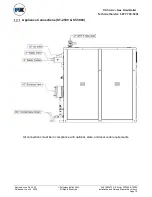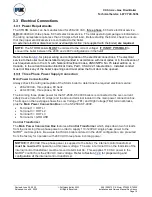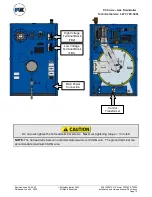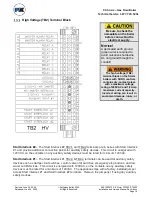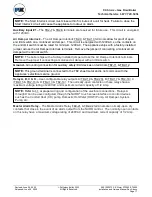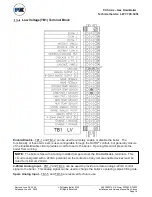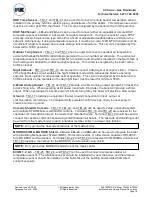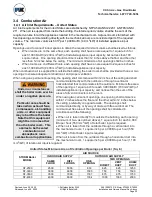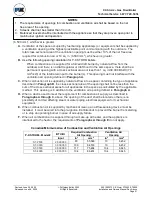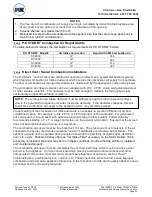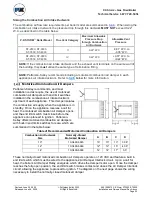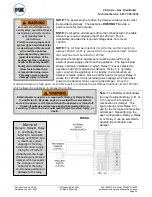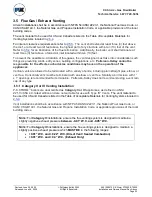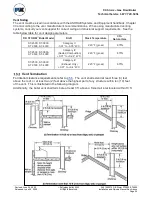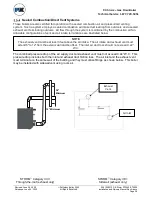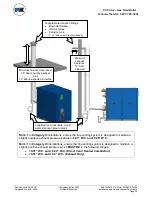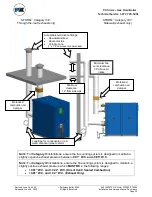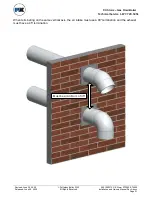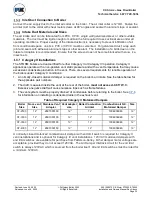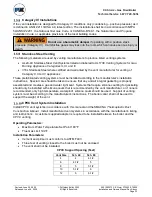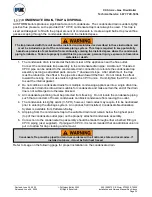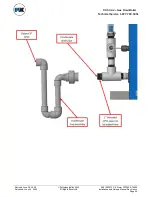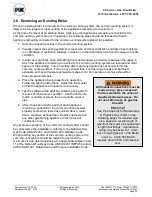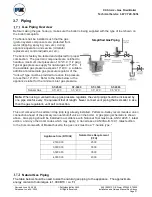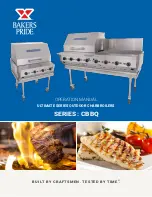
P-K Storm
TM
Gas Fired Boiler
Technical Service 1.877.728.5351
Revised: June 26, 2020
Released: June 26, 2020
©
Patterson-Kelley 2020
All Rights Reserved.
2691000273 P-K Storm ST2500-ST4000
Installation and Owners Manual Rev A.docx
Page 22
P-K STORM
™
Combustion Air Requirements
The table below summarizes the combustion air requirements for P-K STORM
™
boilers:
P-K STORM
™
Model #
Air Intake Connection
Required SCFM Combustion Air
ST-2500
12
”
580
ST-3000
12
”
696
ST-3500
12
”
812
ST-4000
12
”
928
Direct Vent / Sealed Combustion Installations
The P-K Storm
™
series boilers are certified for operation in direct vent / sealed combustion systems,
which feature combustion air intake ductwork which sources the combustion air supply from outdoors.
The flow of combustion air through this ductwork is maintained by t
he appliance’s combustion blower.
The combustion air intake ductwork can be constructed with PVC, CPVC, single wall galvanized steel,
or other suitable materials. The ductwork must be rigid enough to maintain the full required cross
sectional area under all operating conditions.
Proper sealing of the combustion air intake ductwork is necessary to prevent infiltration of air from
conditioned space. For example, joints in PVC or CPVC piping must be cemented. For galvanized
duct, wrap each joint and seam with adhesive aluminum tape or other sealant. Patterson-Kelley
recommends installing a 1” x 1” or larger bird screen on the exterior termination. Ensure that the screen
does not become blocked with snow, ice, insects etc.
The combustion air supply must be free from dust, lint, etc. The presence of such materials in the air
supplied to the burner could cause nuisance "Low Air" shutdowns or premature burner failure. The
appliance should not be operated during construction while the possibility of drywall dust, demolition
dust, etc. exists.
Patterson-Kelley offers an "Air Intake Filter" accessory on the Storm Boilers. If this
accessory is installed, the boiler may be run in these conditions provided that the air filter is installed
and maintained properly.
The combustion air supply must be completely free of chemical fumes which may be corrosive when
burned in the appliance. Common chemicals which must be avoided are fluorocarbons and other
halogenated compounds, most commonly present as refrigerants or solvents, such as Freon
®
,
trichloroethylene, perchloroethylene, chlorine, etc. These chemicals, when burned, cause improper
combustion and premature appliance failure due to the formation of acids which quickly attack the heat
exchanger and the flue piping materials.
NOTE:
The combustion air intake ductwork must be sufficiently rigid in order to prevent collapse
due to the potential for negative pressures inside the ductwork. If the ductwork collapses, this will
restrict the combustion air supply to the appliance which may prohibit operation.
NOTES
1.
The free area of a combustion air supply opening is calculated by deducting the blockage area
of any fixed louvers, grilles or screens from the total area of the opening.
2. Screens shall be not smaller than 1/4 inch.
3. Motorized louvers shall be interlocked with the appliance so that they are proven open prior to
main burner ignition and operation.

